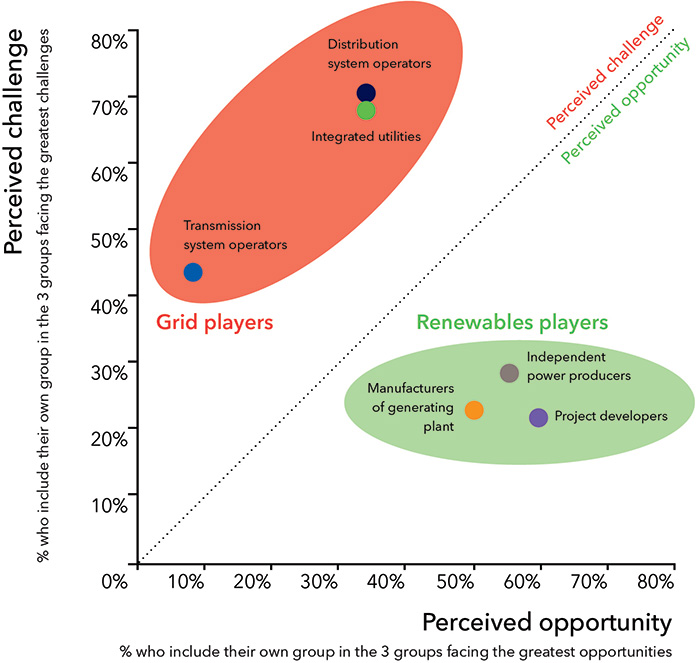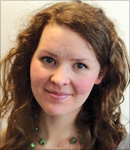DNV GL's global industry survey reveals a worrying split between the renewables sector and system operators, threatening the future deployment of clean energy. Unlocking the potential of wind and solar to operate more flexibly could help bridge the gap
"The days of monopolized' power are coming to an end. Get smarter or get out of the way." This was the frank ultimatum of a North American government employee to DNV GL's global survey of the energy industry. Earlier this year, more than 1,600 people from 71 countries provided their views on a scenario where renewables account for 70 percent of power-sector generation. The results shed light on the energy transition underway.
Change is coming
When asked how quickly the transition could be made to a high renewables system in a secure and affordable manner, 82 percent of respondents believed this could happen by 2050. Even bearing in mind a possible selective bias of optimism amongst those who chose to reply to the survey, this finding is notable.
But the survey revealed a worrying split between the renewables industry and grid players. Whereas renewables players see the opportunities of a high renewables scenario, system and network operators see the challenges. One employee of a distribution system operator went so far as to claim that there will be a revolt' due to the cost implications of renewables deployment.

Figure 1: The renewables sector sees the opportunities, but system operators feel challenged.
Survey question: "The transition to a renewables-based electricity system (70 percent by generation) poses the greatest challenges/opportunities to which stakeholders in your markets(s) of interest? (Choose up to 3 answers)." Note that a subset of respondent groups are plotted.
Of course, renewables have technical characteristics that pose challenges to transmission and distribution operators. The two renewables technologies that are least expensive and are available in volume - wind and PV - are also both highly variable in electricity generation. Wind and PV projects are often fairly small and can be developed quickly - whereas building new grid infrastructure can be a lengthy process.
Bridging the Gap
The split between the renewables and grid players is concerning because a high renewables future can only be achieved with system and network operators on board It needs to be addressed.
Partly the solution lies in interconnection, demand response and storage. But it's time to realize that far from just being a problem' for the grid, renewables can also be part of the solution. It's rarely recognized that, with the exception of providing energy on demand, wind - and to some extent solar - can do anything a network operator wants, and often faster or more accurately than conventional generation can achieve.
Renewables have the potential to provide ancillary services to support the reliable operation of the transmission system. For instance, wind projects can provide synthetic inertia, whereby they increase power output for a matter of seconds during a change in grid frequency. Siting and plant design improvements can also provide substantial grid benefit, often at limited cost.
Technology is not the limiting factor. Although renewables' flexibility potential is significant, project developers and operators are rarely given a reason to use it. The trick, though far from simple, is to structure markets and regulation such that project benefit is aligned with grid benefit.
As our North American respondent rightly highlights, we need to "get smarter." We need to go beyond old metrics and rules, which prevent renewables from being flexible, to help bridge the gap between renewables players and grid players.
It's time to turn the renewables grid integration debate on its head. Renewables are not something to be integrated' into status quo grid arrangements. We need to rethink the electricity system itself, and the contribution of renewables towards it. We need to go beyond old metrics and old rules - beyond integration.
About the Author
 Felicity ("Fliss") Jones, DNV GL senior consultant has lived and worked in the U.K., Singapore and Norway, leading strategy and policy projects in renewables.
Felicity ("Fliss") Jones, DNV GL senior consultant has lived and worked in the U.K., Singapore and Norway, leading strategy and policy projects in renewables.








